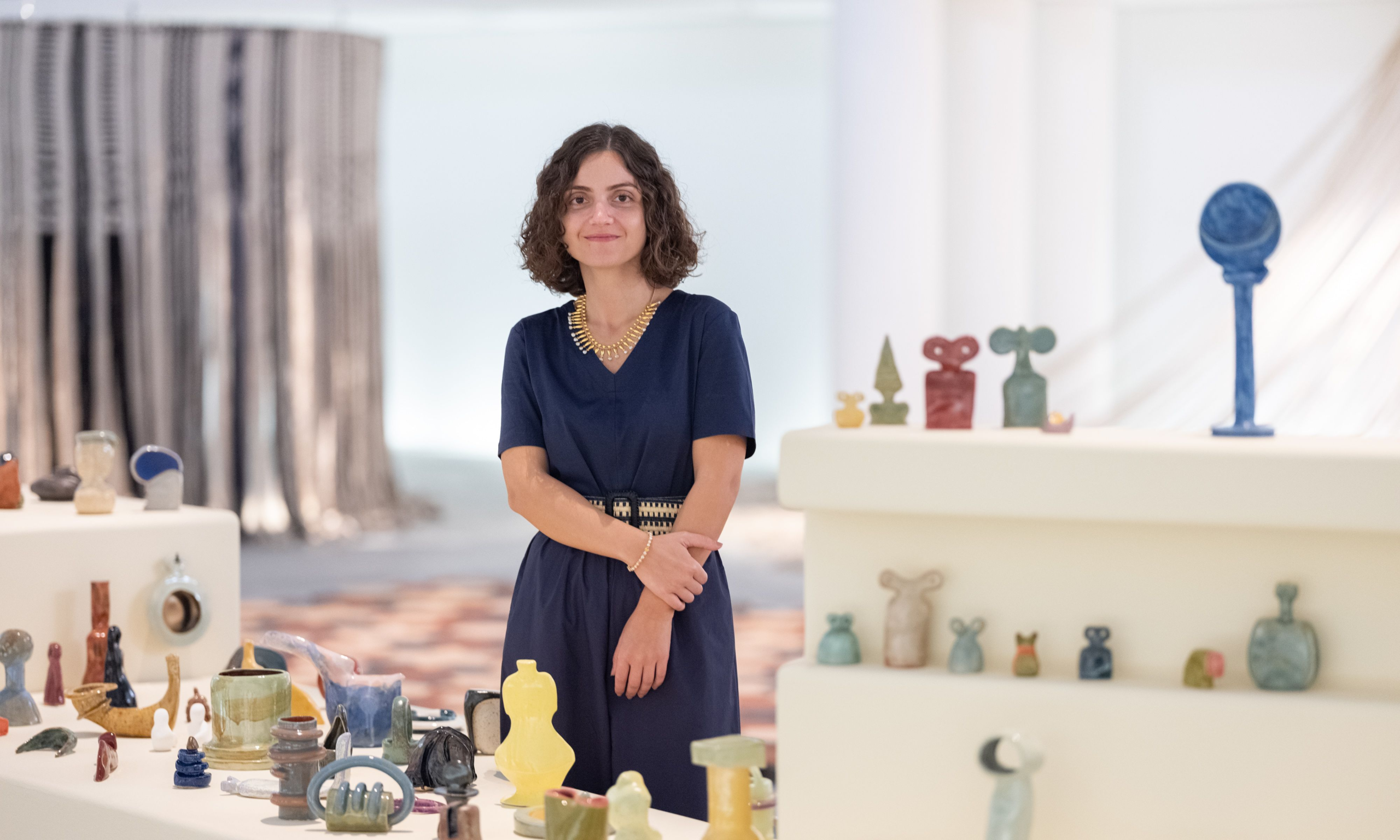Rand Abdul Jabbar with her work Earthly Wonders, Celestial Beings (2019-ongoing) at the Louvre Abu Dhabi
Photo: Augustine Paredes – Seeing Things. Courtesy Department of Culture and Tourism, Abu Dhabi. Artwork © the artist
Ten artists from across the Gulf have been nominated for the second Richard Mille Art Prize. The full list can be found here.
Work by the artists is on show at Louvre Abu Dhabi until 19 March and the winner will be announced 20 March.
Rand Abdul Jabbar’s work Earthly Wonders, Celestial Beings is a collection of 100 handmade clay objects which echo forms from ancient Mesopotamia. Some mimic an object in its totality, while others show a small detail from a relief or piece of sculpture. “A lot of my work engages with historic accounts and memory—the tangible remains of history and the more ephemeral remains.”
One of the objects is based on an image of an ancient pin, but when her father saw it he was reminded of the traditional boats of the Iraqi southern marshes of his childhood, which have swooping prows like the gondolas of Venice. “I love that a form which starts as a pin can morph into a boat, then become a sculpture, and there are these formal references and repetitions that are quite recognisable.”
A close-up of Rand Abdul Jabbar's Earthly Wonders, Celestial Beings (2019-ongoing) at the Louvre Abu Dhabi
Photo: Augustine Paredes – Seeing Things. Courtesy Department of Culture and Tourism, Abu Dhabi. Artwork © the artist
Abdul Jabbar studied architecture at Columbia University in New York and worked for Zaha Hadid as a student. “One of her main ideas is fluidity across scale. So whether you are designing a shoe, or a piece of furniture, or a city masterplan, there is this idea of a language that transcends scale. For me it’s very natural to weave across architecture, design and arts in my practice.”
After university she became interested in furniture design, which morphed into an artistic practice when she started engaging with her personal and family history. Abdul Jabbar was born in Baghdad in 1990 but moved to Abu Dhabi aged five. The project on show at the Louvre Abu Dhabi began after she’d made her first trip back to Iraq since childhood. Visiting Babylon and other ancient sites deepened her interest in archaeology and sparked an affinity with clay as a material.
“Iraq is a clay culture, we have very little stone,” she says. “A lot of our relics and remnants are in clay and the choice to work with ceramics is also materially linked to that lineage. It’s trying to engage with this idea of embodied knowledge: the same way people shaped clay thousands of years ago, you’re repeating gestures, repeating forms.”

